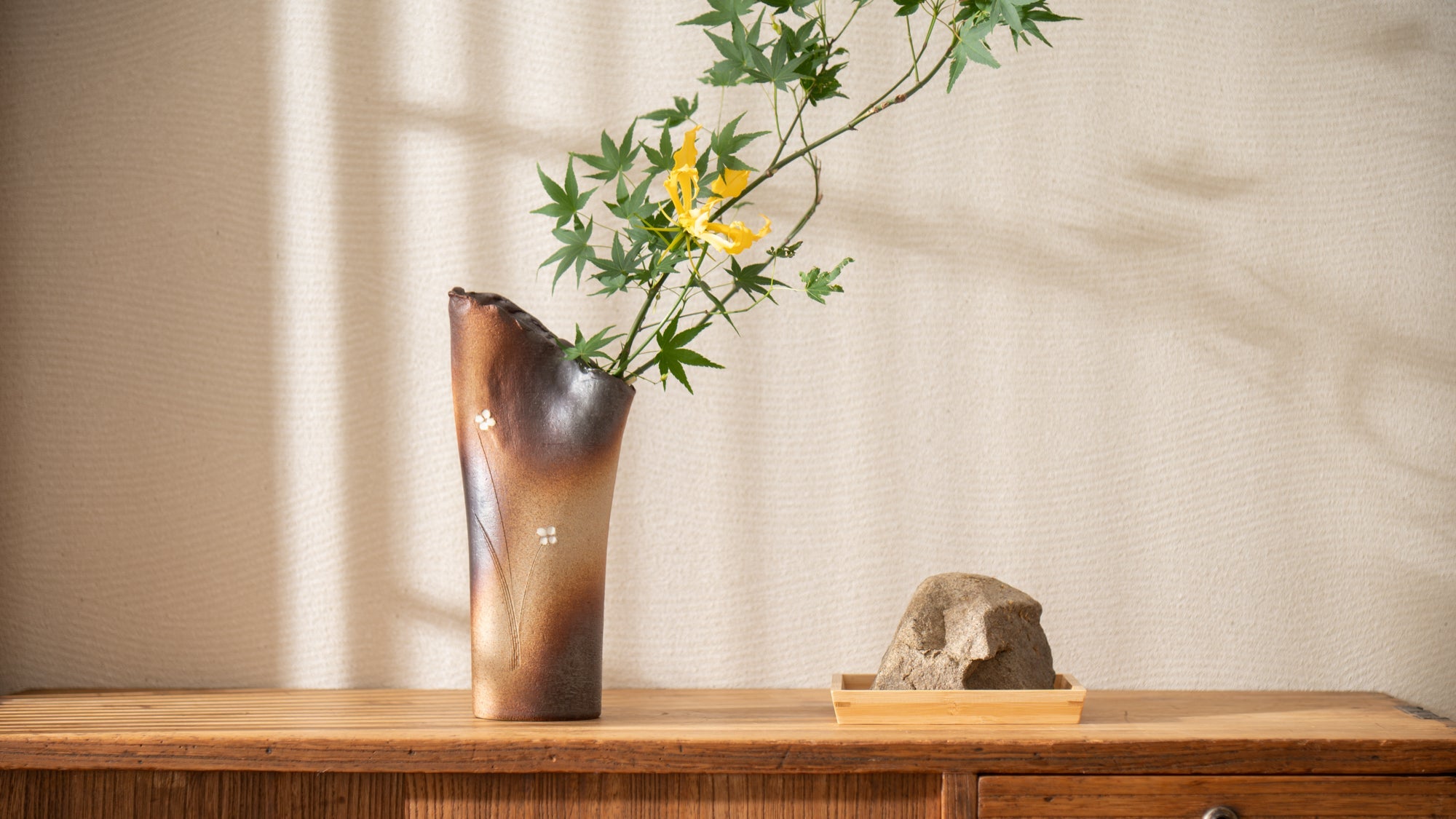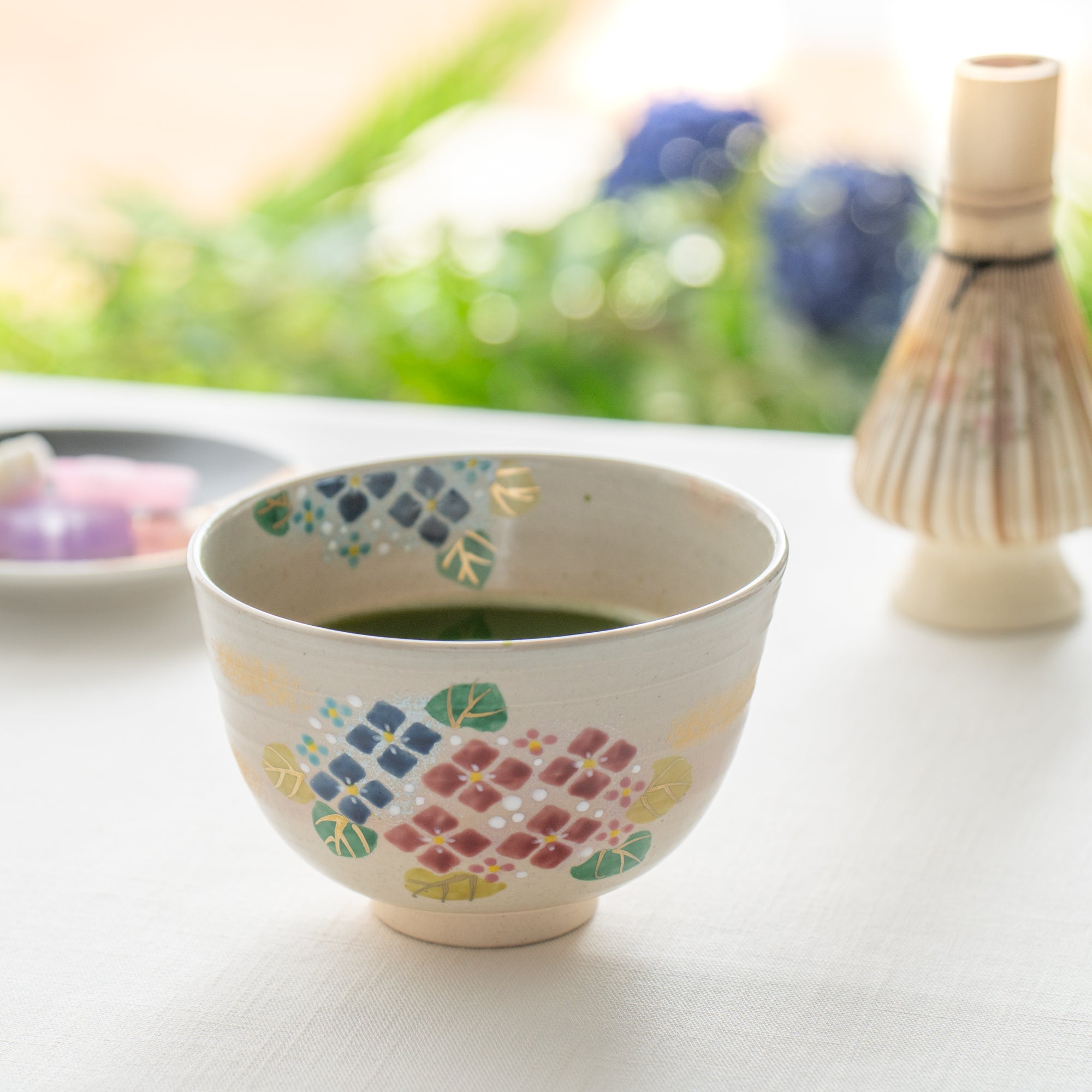
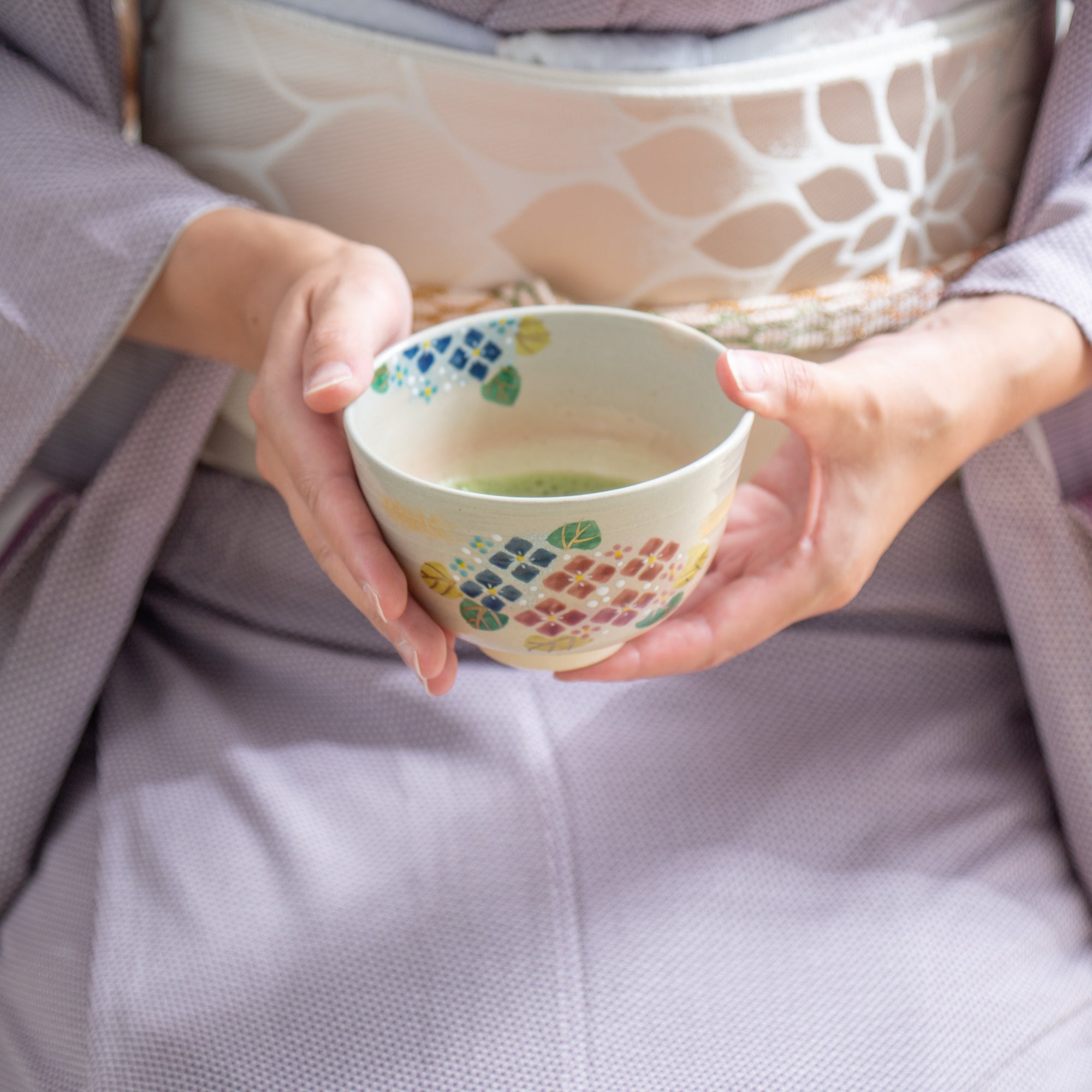

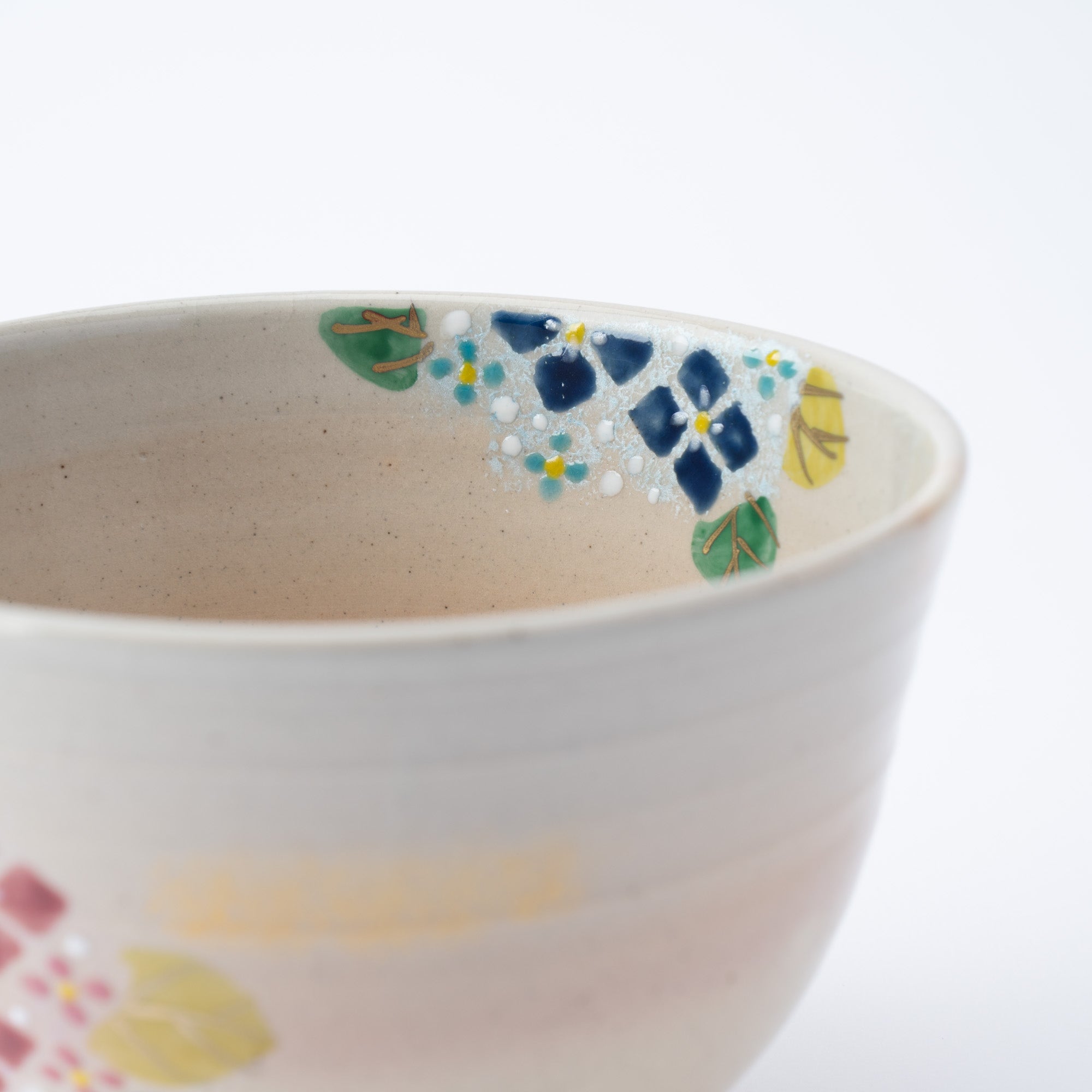
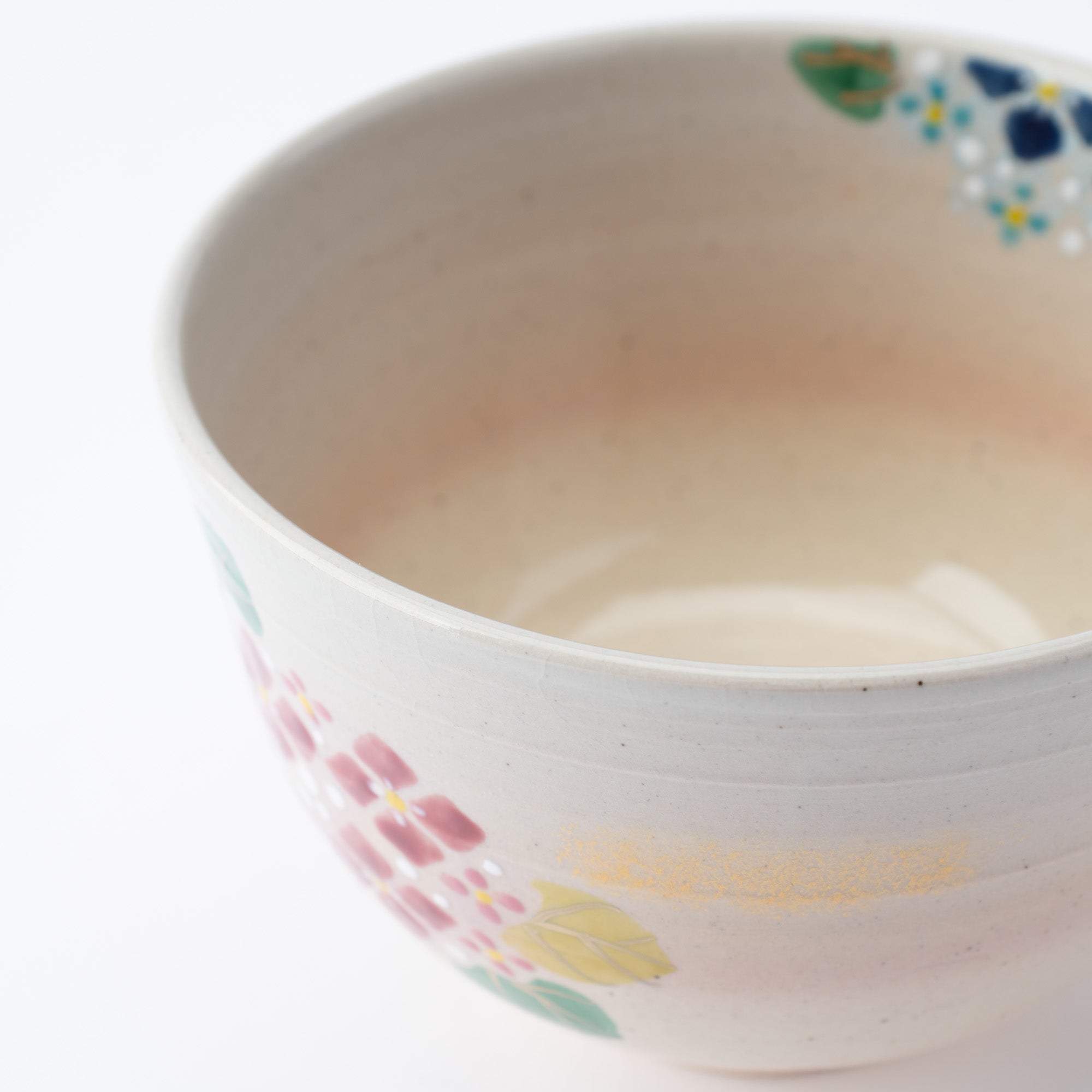
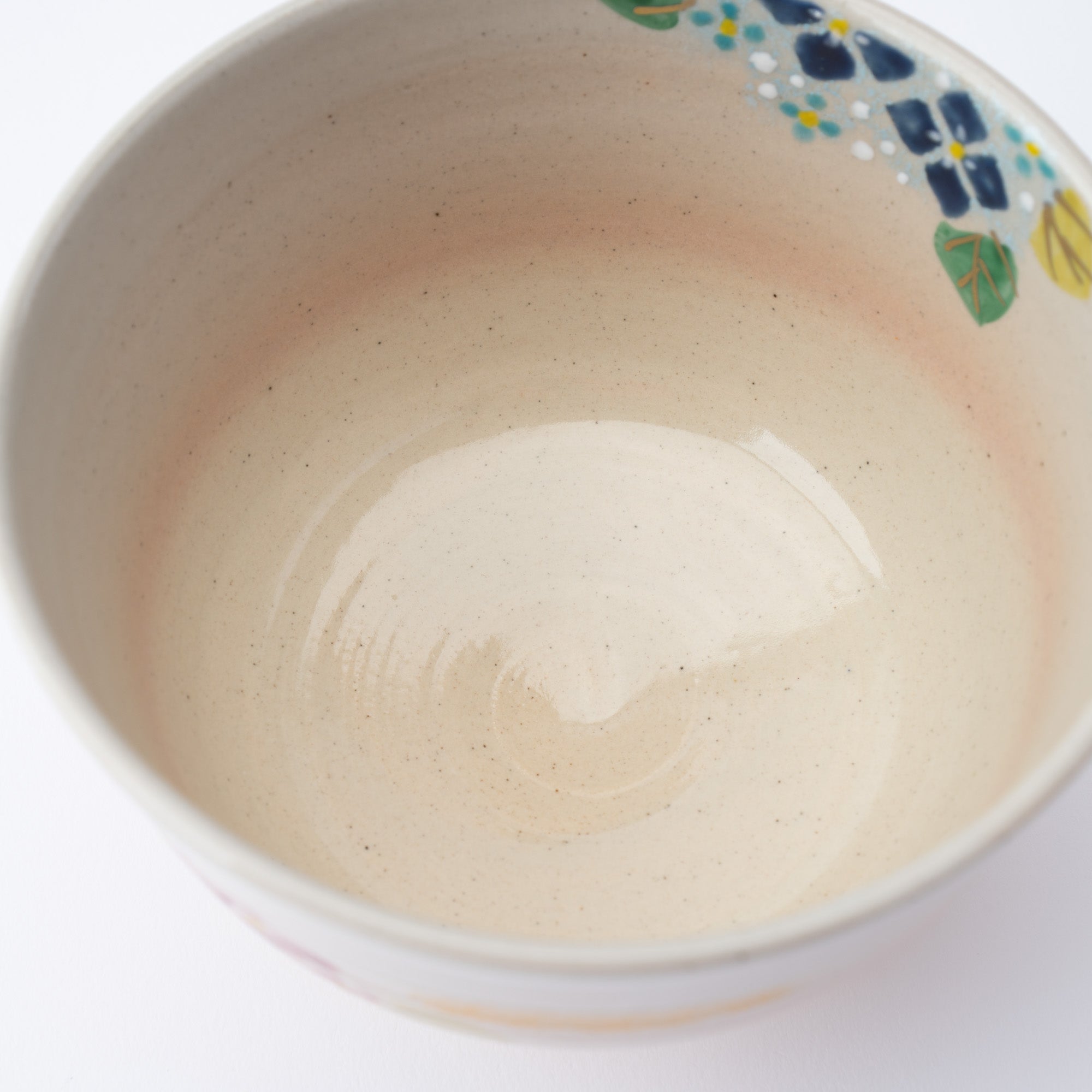
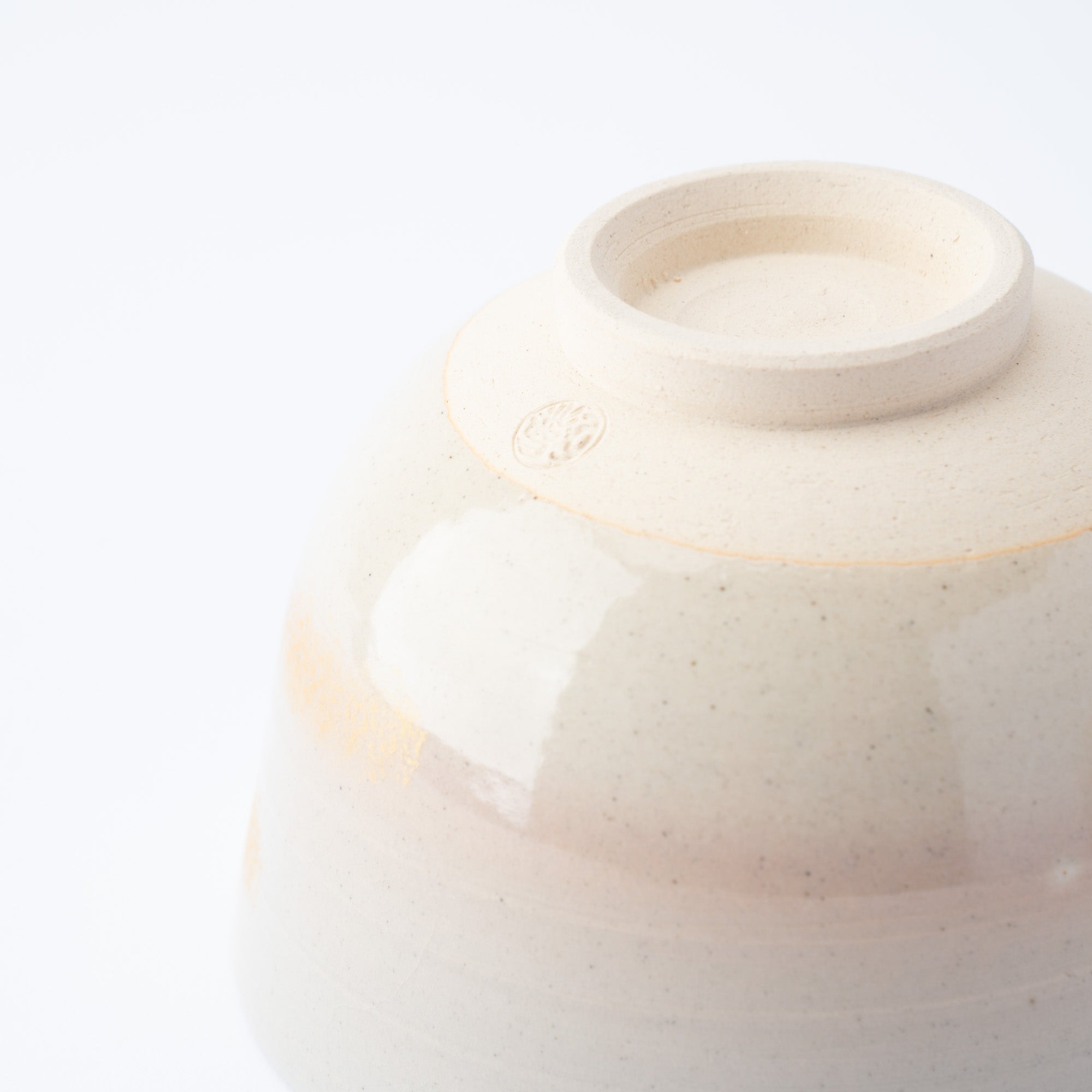
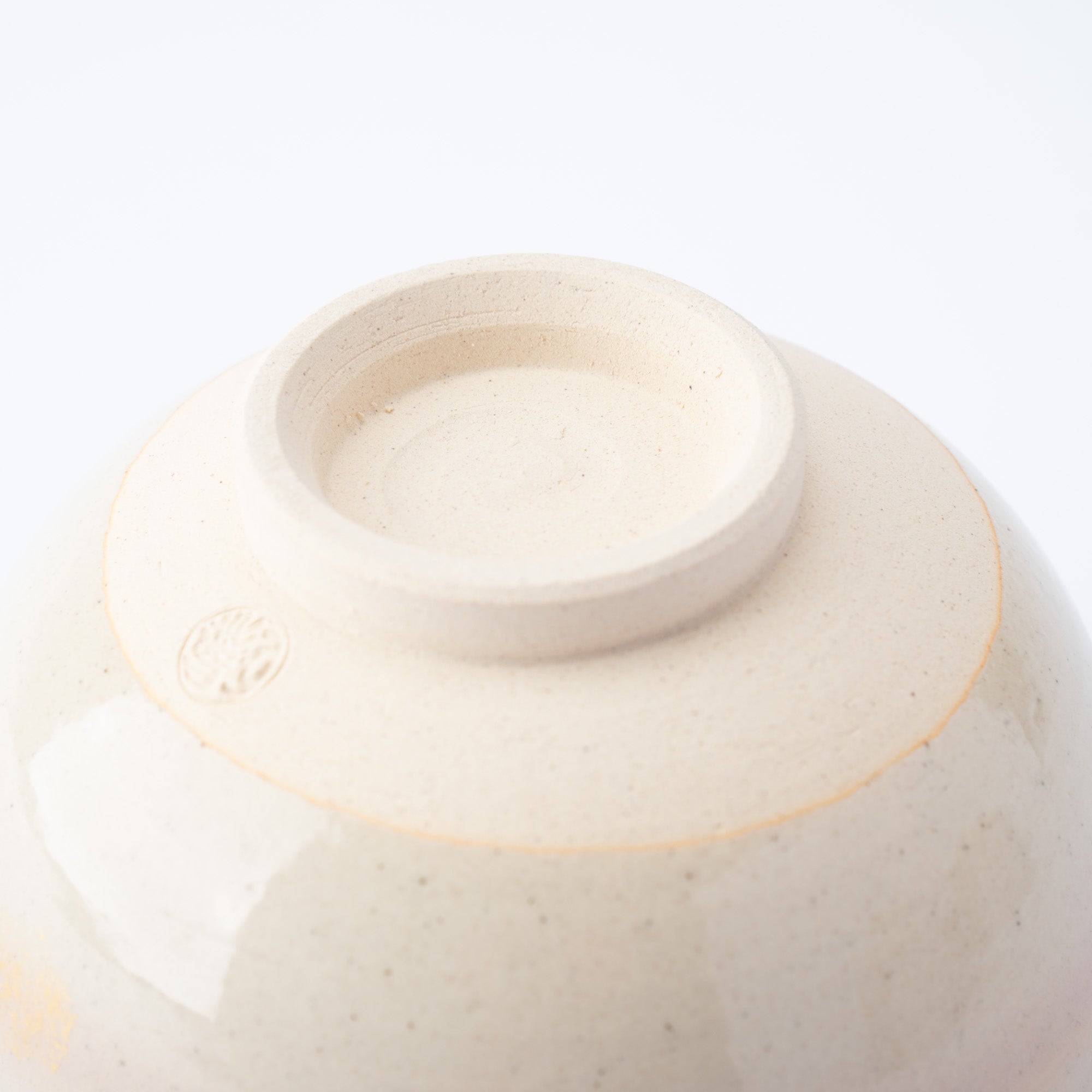
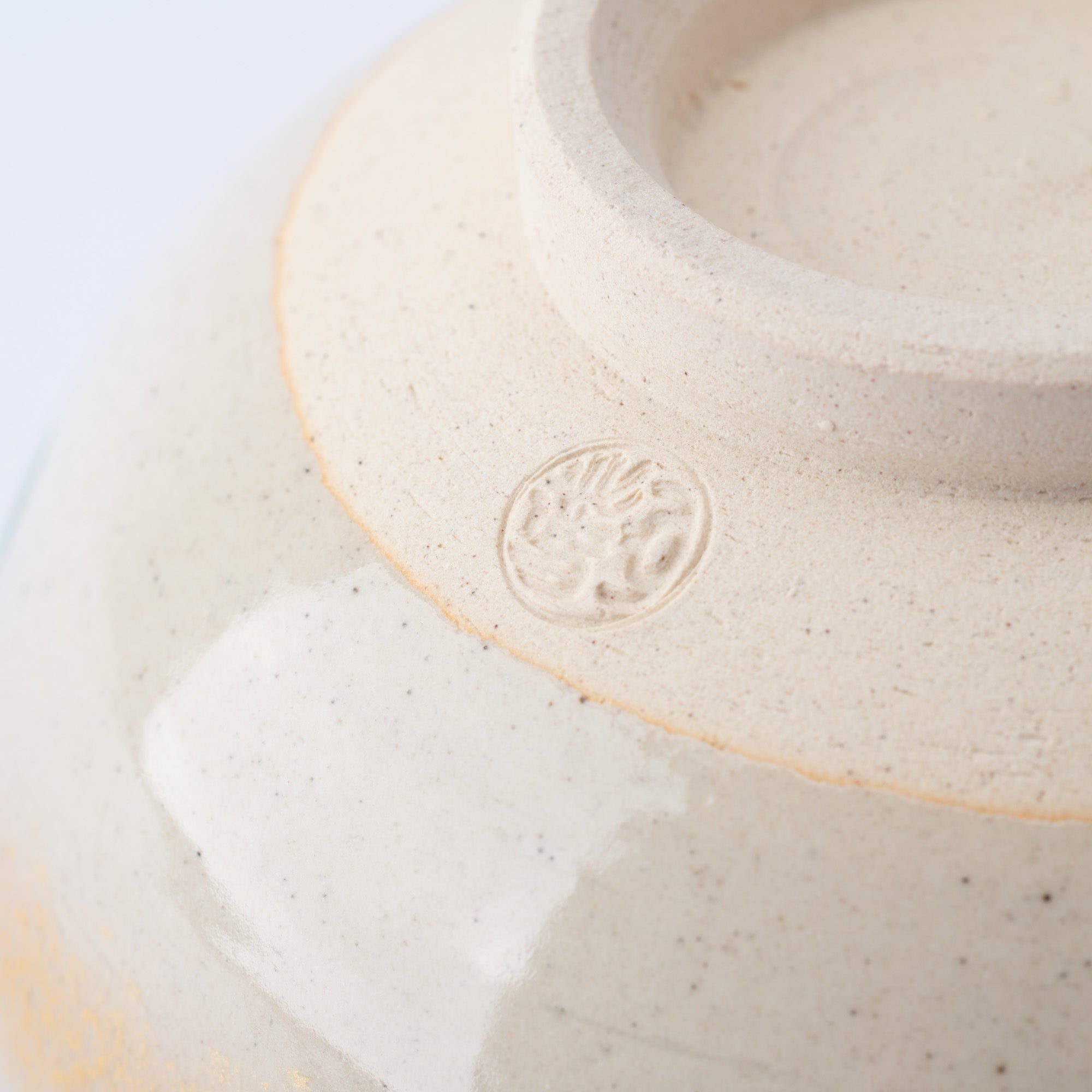
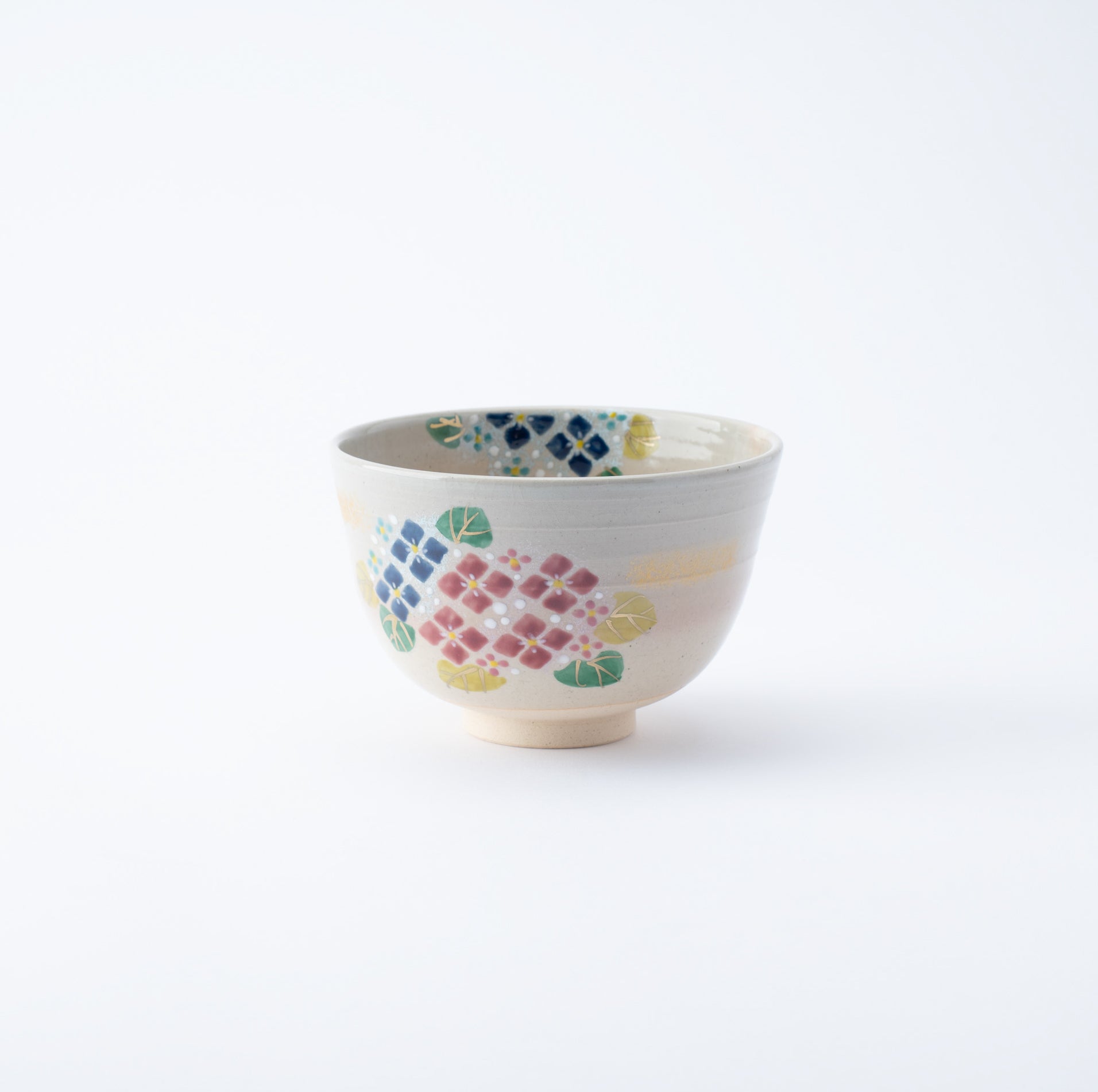
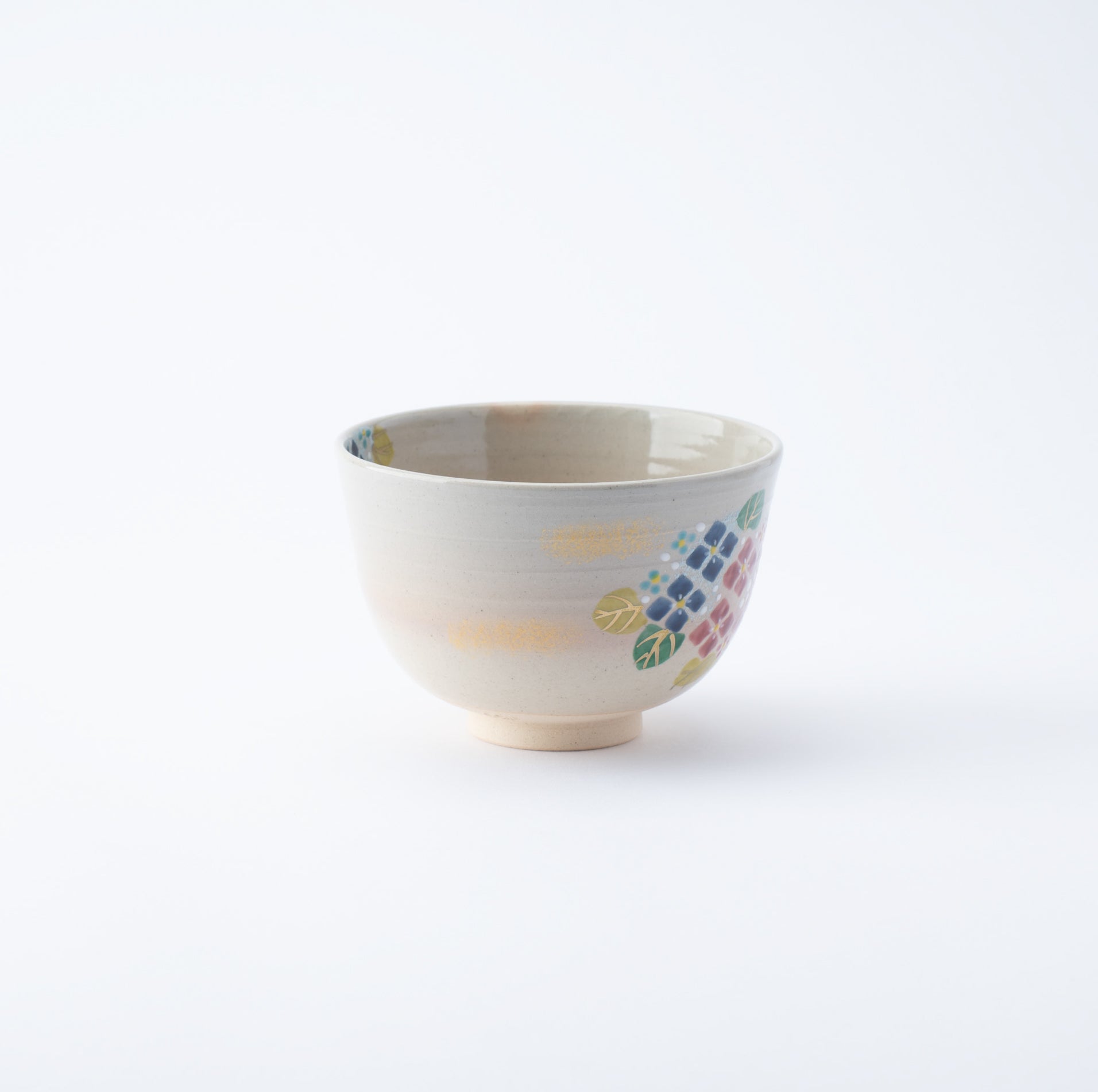
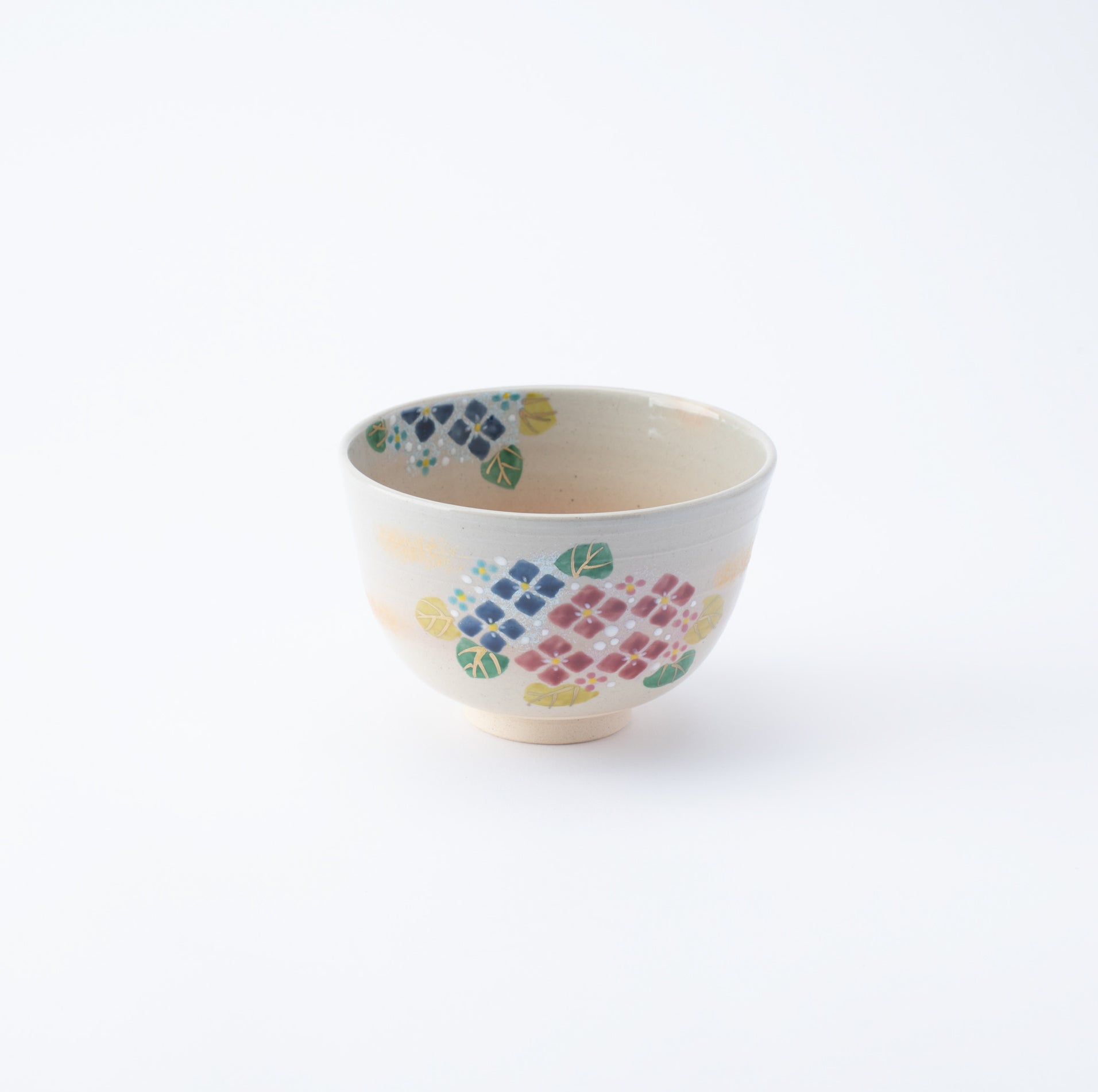
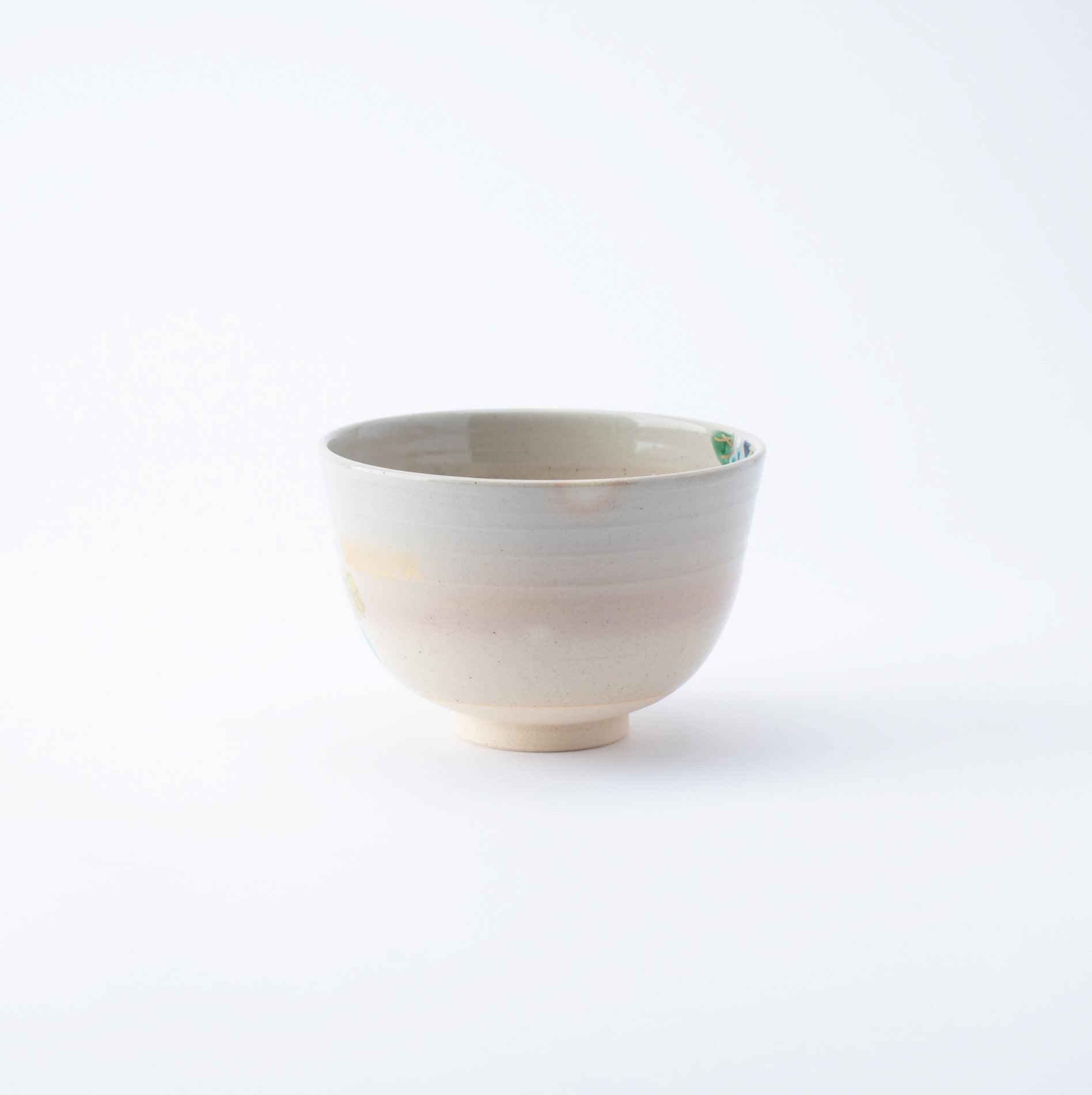

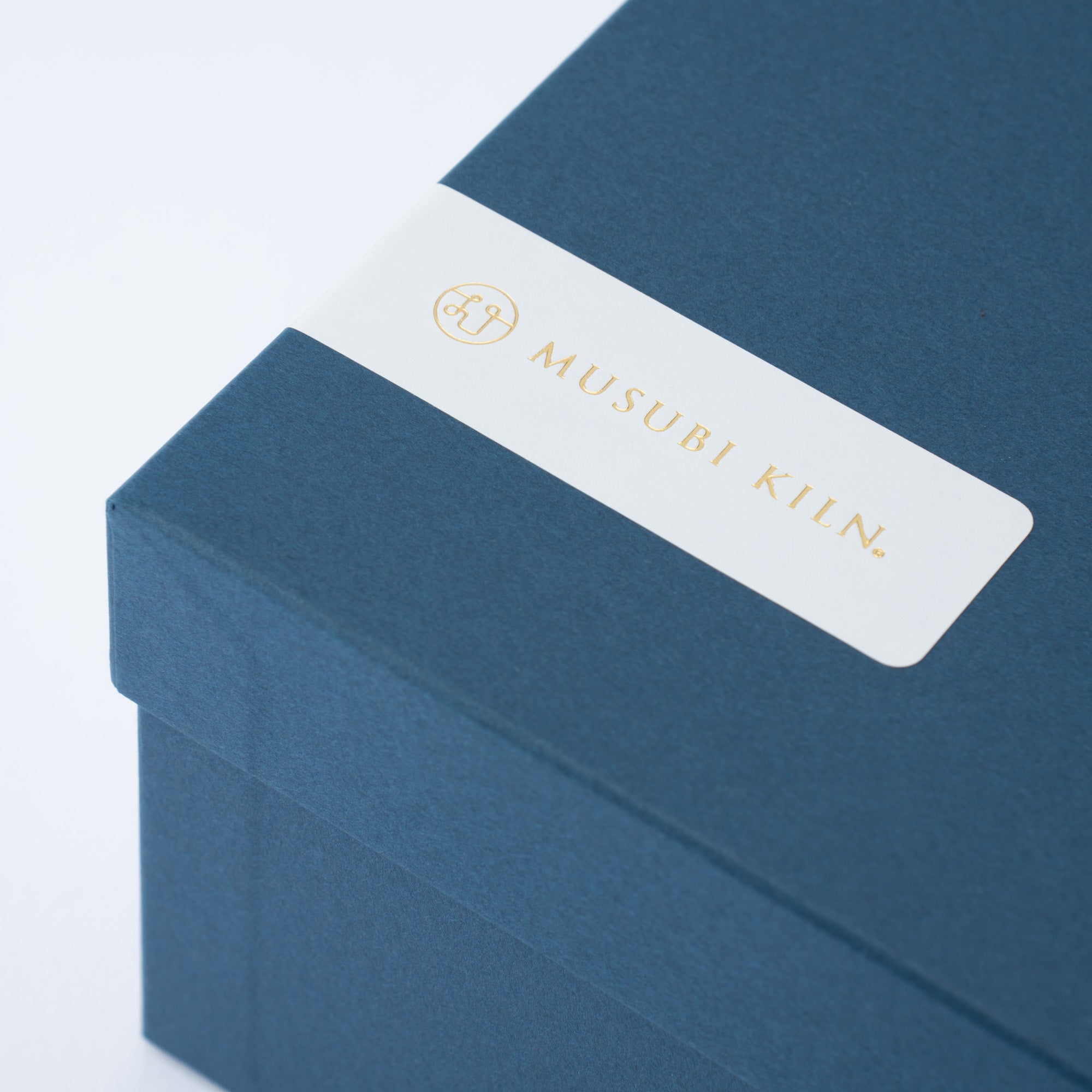
Matcha-Schale mit blühenden Hortensien
Estimated Shipping Widget will be displayed here!
Auffällige Hortensienblüten in Rosa und Blau zieren die Vorderseite dieser Matcha-Schale Chawan. Eine blaue Hortensie ziert die Innenseite, sodass man beim Matcha-Trinken das schöne Blumenmuster bewundern kann.
Die Matcha-Schale ist ideal zum Halten mit beiden Händen, sodass die sanfte Wärme des Matcha allmählich durch die Schale in Ihre Handflächen sickert. Die Zubereitung von Matcha-Tee in dieser Schale fördert ein Gefühl der Ruhe und Entspannung, das durch das intensive Aroma des Matcha noch verstärkt wird.
Die Muster werden von einem Kunsthandwerker bei Tanaka Toubou Stück für Stück von Hand bemalt, was ein typisches Merkmal der Kyo-Ware ist. Die Blütenblätter der Hortensien sind elegant in Rosa und Blau gezeichnet und mit erlesener Goldfarbe umrandet.
EINZELHEITEN
| Quantity | 1 |
| Size | D 11.7 cm (4.6 in) x H 7.7 cm (3.4 in) |
| Capacity | 370 ml (12.5 fl oz) |
| Material | Stoneware |
| Package Type | Paper box |
| Microwave | No |
| Dishwasher | No |
Hersteller / Marke
Am Fuße des Fushimi Inari Taisha-Schreins in Kyoto befindet sich Tanaka Toubou, die Brennerei der Kunsthandwerker Tanaka Nobuo und Tanaka Michiko. Sie sind seit 35 Jahren in Betrieb und haben sich auf die Herstellung einzigartiger Utensilien für die Teezeremonie und des täglichen Gebrauchsgeschirrs spezialisiert.
Nobuo kreiert hauptsächlich glasierte Ware mit einem schwarzen tenmoku Glasur, die mindestens fünf Prozent Eisen enthält. Michikos Arbeiten fangen die Essenz jeder Jahreszeit zusammen mit sanften Darstellungen von Pflanzen und Tieren ein und schaffen so eine emotionale Verbindung zu ihren Bewunderern.
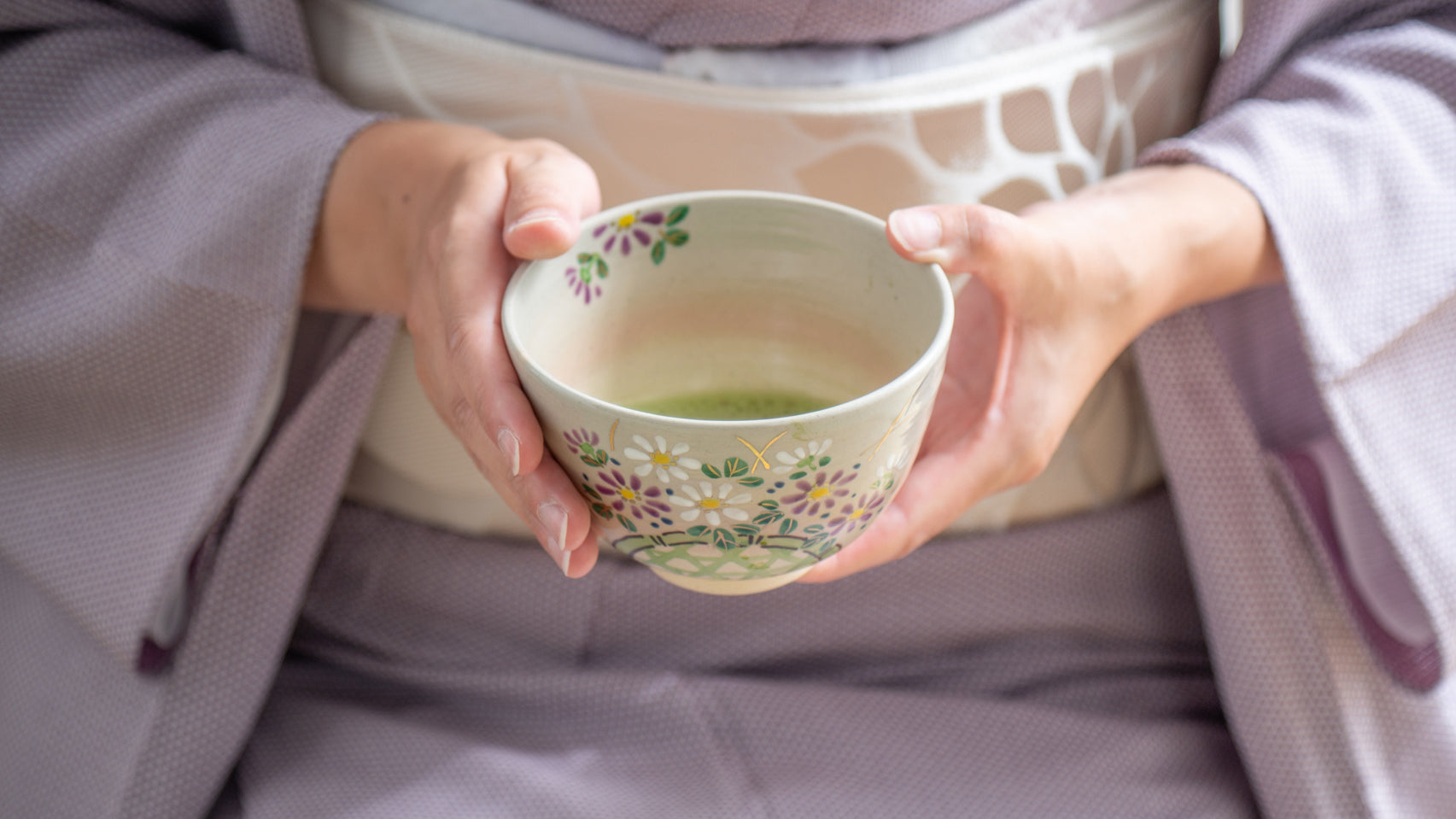
Kunsthandwerk
Kyo- und Kiyomizu-Ware, zusammen als Kyo-yaki und Kiyomizu-yaki bekannt, sind berühmte Keramikstile aus Kyoto. Bekannt für ihr lebendiges Design, ihre fein geformten Formen und die Liebe zum handwerklichen Detail, spiegeln diese Waren Kyotos unverwechselbaren Sinn für Schönheit und künstlerische Raffinesse wider.
Kyo- und Kiyomizu-Ware zeichnen sich durch eine lange gepflegte Vielfalt aus und greifen auf Techniken und Stile der Töpfertraditionen Japans zurück. So entwickelte sich eine ausdrucksstarke und typisch Kyoto-Kunstform. 1977 als traditionelles japanisches Kunsthandwerk anerkannt, werden sie bis heute wegen ihrer kulturellen Tiefe und Alltagstauglichkeit geschätzt.

Anmerkungen
Optionen auswählen















Estimated Shipping Widget will be displayed here!
Matcha Schüsseln
Nehmen Sie sich einen Moment Zeit zum Entspannen und genießen Sie Matcha zu Hause mit einem authentischen und wunderschön zubereiteten Matcha chawan.
Entdecken Sie unsere Kollektion handgefertigter japanischer Matcha-Schalen, die alle von erfahrenen Kunsthandwerkern hergestellt wurden, und finden Sie die perfekte Schale für Ihr Tee-Erlebnis.
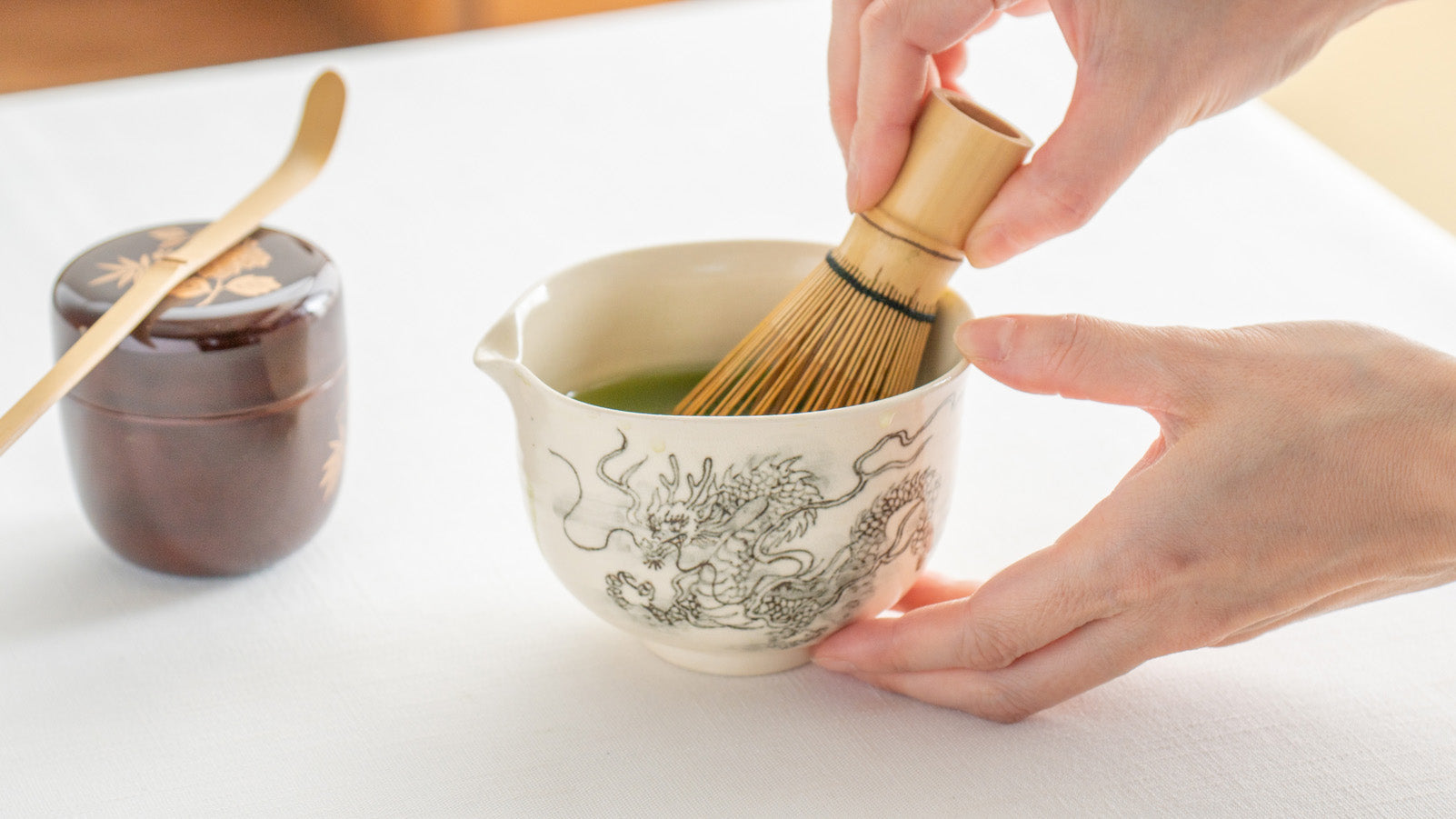
Steingut
Aus unserer Kollektion an Geschirr und Essgeschirr haben wir Steinzeugprodukte zusammengestellt, die die Wärme des Materials voll zur Geltung bringen. Wir hoffen, dass Sie diese Stücke, die bei Menschen jeden Alters und aus allen Regionen beliebt sind, in Ihrem Zuhause willkommen heißen.
